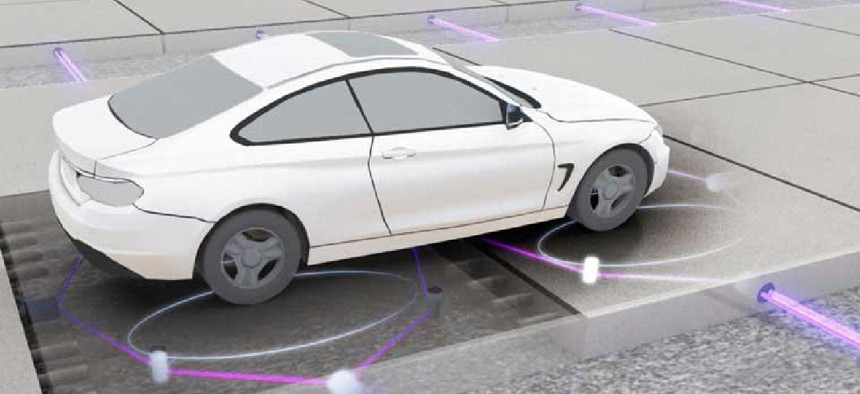Smart pavement testing in Colorado

Connected pavement will be able to notify first responders when a car goes off the road.
The Colorado Department of Transportation is working to install smart pavement technology in the highway to notify first responders whenever a car has run off the road.
The high-tech surface is installed in premade, modular slabs that contain a mesh network of fiber-optic sensing cables that allow the roadway to “feel” a car in the same way a smartphone can feel a finger. The road can also be connected to expansion modules like satellites, sensors, data storage or “whatever you need,” according to Tim Sylvester, CEO of Integrated Roadways, CDOT's partner in the venture. There are 2,000 expansion ports per mile for every lane.
“For this first deployment, it's going to be pretty rudimentary,” Peter Kozinski, the director of CDOT’s RoadX smart transportation program, told GCN. “All I’m asking them to do at this point in time is tell me when a vehicle leaves the road in a manner that suggests it left unsafely and then have that pavement notify first responders so they can go check it out.”
The $2.75 million contract for the five-year demonstration project was awarded in March, but “we’re not integrating it into our larger CDOT system just yet because we’re not quite sure if the data is reliable,” Kozinski said.
The chosen deployment site is a curvy section of US 285 at the end of a lengthy straightaway that features the first of many switchbacks heading into a more mountainous terrain. Inattentive motorists may drive off the road here, but given its rural setting there might not always be someone around to report the accident.
The sensors in the pavement pass data to servers that run the algorithms that determine if the movement picked up by the road is indicative of a runoff. These servers are housed in units along the highway that also include battery backups and space for third-party equipment. The Integrated Roadways system updates alerts in an Amazon Web Services cloud, which CDOT officials can access through a dashboard. This setup is temporary. If CDOT expands the smart pavement network, the alerts will be integrated with existing systems in the state’s transportation control center, but this is a costly process, Sylvester said.
Currently, the internet connection for the smart pavement is provided by a millimeter wave signal being shot through the valley, but CDOT plans to run fiber-optic cable through there in the future, Sylvester said.





